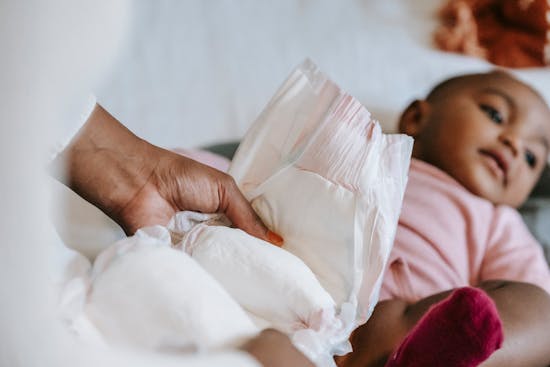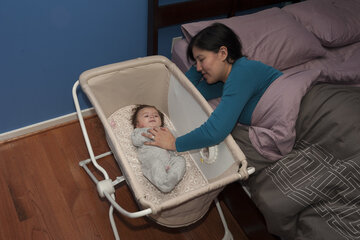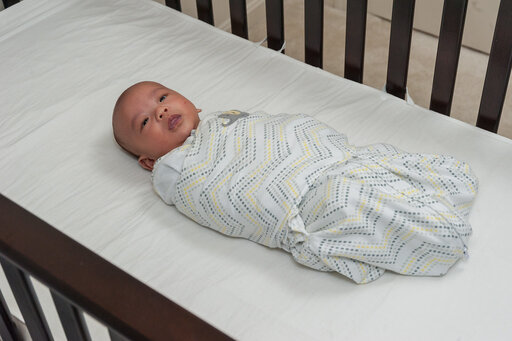
Changing a baby’s diaper is an essential part of keeping them clean, healthy, and comfortable. The frequency of How Often to Change Baby Diaper depends on factors like the baby’s age, feeding habits, and whether they are awake or asleep.
Newborns typically need their diapers changed every 2–3 hours, as they urinate frequently and have several bowel movements daily.
Older babies may need fewer changes, usually around 4–6 times daily.
It’s crucial to change the diaper as soon as it’s soiled, especially after a bowel movement, to prevent diaper rash and discomfort.
During the night, some parents may allow longer intervals if the baby is only wet and not uncomfortable, but poopy diapers should always be changed promptly.
Every baby is unique, so observing their patterns will help establish the right routine. Keeping their skin clean, dry, and protected with a diaper cream when necessary can ensure they stay happy and rash-free.
How Often to Change Baby Diaper
Caring for a newborn involves many tasks, but diaper changes are one of the most frequent and essential parts of your daily routine.
Newborns have tiny bladders, sensitive skin, and unpredictable bowel movement schedules, which means their diapers often need to be changed
Every 2–3 hours or about 8–12 times a day. Ensuring timely diaper changes is crucial for their comfort, hygiene, and overall health.
Why Frequent Diaper Changes Are Important
Preventing Diaper Rash
Newborns’ skin is extremely delicate and more prone to irritation. Prolonged contact with urine or feces can lead to diaper rash, which causes redness, discomfort,
and sometimes infection. Frequent diaper changes help minimize skin contact with moisture and bacteria.
Ensuring Comfort
Wet or soiled diapers can be uncomfortable for a newborn, leading to fussiness or disrupted sleep. Keeping their diaper clean and dry ensures they remain calm and happy throughout the day and night.
Promoting Hygiene
Changing diapers promptly reduces the risk of urinary tract infections (UTIs), which are more common in babies if bacteria from feces spread to the urinary tract. This is particularly important for baby girls, who are at higher risk.
How Often to Change Baby Diaper?
After Urination
Newborns urinate frequently—sometimes as often as every 1–3 hours. While modern disposable diapers can hold a good amount of liquid, it’s best not to leave a wet diaper on for too long.
Even though it may not always seem wet, many diapers have wetness indicators to alert you when it’s time to change.
After a Bowel Movement
Newborns, especially breastfed babies, often pass stools multiple times a day. It’s critical to change the diaper immediately after a bowel movement to prevent irritation, as stool is more likely to cause skin issues than urine.
During Nighttime
At night, diaper changes depend on the baby’s sleep pattern and sensitivity. For the first few weeks, you’ll likely change diapers during nighttime feedings.
Diapers designed for overnight use can help keep your baby dry for longer stretches.
How Often Should I Change My Baby’s Diaper?

Knowing when and how often to change your baby’s diaper is essential for their health, hygiene, and comfort. The frequency of diaper changes depends on your baby’s age, their feeding habits, and whether their diaper is wet or soiled.
General Guidelines for Changing Your Baby’s Diaper
Newborns (0–2 Months)
You’ll likely need to change their diaper every 2–3 hours, or 8–12 times a day, to keep them clean and comfortable. Wet diapers and bowel movements should be addressed promptly to prevent diaper rash and skin irritation.
Infants (3–12 Months)
As babies grow, their bladder capacity increases and bowel movements become more regular, especially after starting solid foods. During this stage, you can expect to change diapers about 6–8 times a day.
Wet diapers may not need immediate attention unless the baby seems uncomfortable, but dirty diapers should always be changed right away.
Toddlers (1 Year and Older)
Toddlers often require fewer diaper changes, usually 4–6 times a day, as they begin to develop better bladder control. However, it’s still essential to change diapers when they’re wet or soiled to prevent irritation.
Nighttime Changes
Nighttime diaper changes depend on your baby’s age and sleeping patterns.
For newborns: Change diapers during nighttime feedings, especially if they are soiled.
For older babies: Use overnight diapers with high absorbency to reduce the need for nighttime changes unless the diaper is heavily soiled or causing discomfort.
Signs That It’s Time to Change a Diaper
Wetness Indicators: Many modern diapers have color-changing wetness indicators that let you know when the diaper is wet.
Smell: A noticeable odor often indicates a bowel movement.
Discomfort or Fussiness: Babies may cry or squirm if their diaper is wet or soiled.
Why Frequent Diaper Changes Matter
Prevents Diaper Rash: Changing diapers promptly minimizes prolonged contact with moisture and bacteria, reducing the risk of irritation and rashes.
Maintains Hygiene: Regular changes keep your baby clean and lower the chance of infections, especially urinary tract infections (UTIs).
Ensures Comfort: Clean diapers help your baby feel comfortable, reducing fussiness and promoting better sleep.
How Often to Change a Newborn’s Diaper at Night

Nighttime diaper changes for a newborn can be challenging, but they are important for keeping your baby comfortable and preventing diaper rash. Newborns typically need their diapers changed every 2–3 hours,
even at night, as they urinate frequently and may have multiple bowel movements. However, the exact frequency depends on your baby’s age, sleep habits, and feeding schedule. Visit Top Jogging Stroller Pish Posh Baby Ideal for Active Families
Tips for Managing Nighttime Diaper Changes
Use Overnight Diapers:
Opt for diapers designed to hold more liquid, reducing the need for frequent changes. These diapers can keep your baby dry longer and help them sleep more comfortably.
Keep the Lights Low:
Use a dim light to avoid overstimulating your baby, which can make it harder for them to fall back asleep.
Be Gentle and Quiet:
Move slowly and speak softly during nighttime changes to keep the environment calm and soothing.
Use Diaper Cream:
Applying a barrier cream at bedtime can protect your baby’s skin from irritation caused by prolonged exposure to moisture.
Consider Timing:
If your baby hasn’t soiled their diaper and it’s only slightly wet, you might be able to delay the change until the next feeding. However, always prioritize your baby’s comfort.
As Your Baby Grows
As your baby gets older and begins sleeping for longer stretches, they may not need diaper changes as frequently during the night.
By around 6–8 weeks, some babies can sleep for longer periods without waking, and you may only need to change their diaper if it’s heavily soiled or causing discomfort.
Using absorbent overnight diapers can further reduce the need for nighttime changes.
Why Change Your Baby’s Diaper Regularly?
Regular diaper changes are essential for your baby’s health, comfort, and well-being. Babies, especially newborns, urinate frequently and may have multiple bowel movements daily.
Ensuring their diaper are clean and dry reduces the risk of discomfort, irritation, and health issues. Below are the key reasons why regular diaper changes are so important.
Prevent Diaper Rash
Prolonged exposure to urine and feces can irritate your baby’s delicate skin, leading to diaper rash. This condition causes redness, soreness, and, in severe cases, painful blisters.
Changing diapers promptly minimizes moisture and bacteria, helping to protect your baby’s sensitive skin.
Maintain Hygiene and Prevent Infections
Dirty diapers can harbor bacteria, which can lead to infections if left unattended.
Urinary Tract Infections (UTIs): Prolonged exposure to bacteria from stool increases the risk of UTIs, particularly in baby girls.
Yeast Infections: Moist, warm environments can encourage fungal growth, leading to yeast infections. Regular changes help keep the area dry and clean.
Ensure Comfort
A wet or soiled diaper can cause discomfort and disrupt your baby’s mood or sleep. Regular diaper changes keep your baby feeling fresh and comfortable, reducing fussiness and helping them stay content throughout the day.
Promote Healthy Skin
Constant moisture in the diaper area can break down your baby’s skin barrier, making it more vulnerable to irritation and infection. Regularly changing diapers helps keep the skin dry, maintaining its health and resilience.
Tips for Regular Diaper Changes
Check Often: Newborns may need diaper changes every 2–3 hours, while older babies require changes 4–6 times daily.
Use Barrier Cream: A thin layer of diaper cream can help protect the skin from moisture and irritation.
Monitor Wetness Indicators: Many diapers come with wetness indicators that signal when it’s time for a change.
Clean Thoroughly: Always clean your baby’s diaper area gently with wipes or a damp cloth, and let it air dry before putting on a fresh diaper.
Should You Change a Diaper Before or After Feeding?

Whether you should change your baby’s diaper before or after feeding depends on the situation, your baby’s habits, and your overall routine.
Here’s a closer look at the pros and cons of both approaches, along with some practical tips to make the process easier.
Changing the Diaper Before Feeding
Advantages:
Prevents Interruptions During Feeding: A fresh diaper ensures your baby is comfortable and less likely to fuss or get distracted during feeding.
Minimizes Risk of Spit-Up: Some babies are prone to spitting up if moved too much after feeding. Changing the diaper beforehand avoids excessive movement post-meal.
Encourages Wakefulness: If your baby tends to fall asleep while feeding, changing the diaper beforehand can gently wake them up, ensuring they feed properly.
When to Do This:
If the diaper is heavily wet or soiled before feeding.
If your baby is prone to falling asleep during feedings and you want to ensure they stay alert to complete their meal.
Changing the Diaper After Feeding
Advantages:
Catches Post-Meal Bowel Movements: Babies, especially newborns, often have bowel movements during or immediately after feeding. Changing the diaper after feeding avoids doubling the work.
Helps Settle Baby for Sleep: If feeding is part of your bedtime routine, a post-feeding diaper change ensures your baby stays dry and comfortable for longer sleep stretches.
When to Do This:
If your baby typically soils their diaper during or immediately after feeding.
If the diaper is only slightly wet before feeding, you can wait until after the meal to change it.
Combination Approach
In some cases, you may need to change the diaper both before and after feeding:
Change before feeding to ensure comfort during the meal.
Change again after feeding if the diaper becomes soiled during or immediately afterward.
Practical Tips for Diaper Changes Around Feeding
Check the Diaper First: Assess the diaper’s condition before feeding. If it’s heavily soiled or very wet, change it before feeding.
Minimize Disruptions: Use dim lighting and keep your voice soft during nighttime feedings to avoid overstimulating your baby.
Avoid Overhandling After Feeding: If your baby is prone to spitting up, be gentle when changing the diaper post-feeding to minimize movement.
Use High-Absorbency Diapers: Especially during nighttime feedings, opt for highly absorbent diapers to reduce the need for frequent changes.
Signs It’s Time for a Diaper Change
Keeping your baby comfortable and clean means knowing when it’s time for a diaper change. Babies may not always show obvious signs, but being attentive to cues
and checking the diaper regularly can help prevent discomfort, diaper rash, and leaks. Here are the most common signs it’s time for a diaper change:
Regularly checking their diaper and understanding these signals can help you stay ahead of the mess and keep your baby happy. Here’s a comprehensive guide to the signs it’s time for a diaper change.
Wetness
Modern Diapers: Many diapers feature a wetness indicator, such as a color-changing line, to show when the diaper is wet. This makes it easier to know when a change is needed, even without opening the diaper.
Feel the Diaper: If the diaper feels heavy, saggy, or squishy, it’s likely wet and needs to be changed.
Why It’s Important: Leaving a wet diaper on for too long can lead to discomfort and increase the risk of diaper rash due to prolonged exposure to moisture.
Odor
Noticeable Smell: A strong or unusual smell, especially sour or ammonia-like, often indicates the presence of urine or a bowel movement.
Frequent Checks: Sometimes, subtle odors from a wet diaper may go unnoticed, so it’s essential to check regularly even if there’s no strong smell.
Baby’s Behavior and Reactions
Fussiness or Crying: Babies often cry or become fussy when they’re uncomfortable, and a wet or soiled diaper is a common reason.
Restlessness or Squirming: If your baby is wriggling or acting restless, it might be a sign of discomfort from a dirty diaper.
Tugging at Diaper Area: Older babies who are starting to gain motor skills may grab or tug at their diaper area as a sign that it’s wet or soiled.
Why It’s Important: Paying attention to your baby’s cues helps you address their needs quickly, keeping them content and preventing further discomfort.
Sleep Disruption
Waking During Naps: A full or soiled diaper might wake your baby up earlier than usual.
Restlessness at Night: If your baby is tossing and turning or waking up frequently, checking the diaper should be one of the first things you do.
Why It’s Important: Keeping the diaper dry during sleep promotes longer, more restful stretches of sleep for both your baby and you.
Redness or Skin Irritation
Early Signs of Rash: If you notice redness or irritation in the diaper area during a routine check, it’s a sign the diaper may need to be changed more frequently.
Moisture or Chafing: Prolonged contact with a wet or soiled diaper can break down the skin’s natural barrier, leading to diaper rash or discomfort.
Why It’s Important: Regular changes and using diaper cream can help prevent irritation and maintain healthy skin.
Obvious Bowel Movements
Grunting or Straining: Newborns often grunt, strain, or turn red in the face when having a bowel movement.
Check for Soiling: Even if your baby doesn’t show these signs, check the diaper for stool after feedings, as newborns often have bowel movements shortly after eating.
Why It’s Important: Feces can irritate the skin more quickly than urine, so it’s crucial to change the diaper immediately after a bowel movement.
Diaper Changing Tips: Keeping Your Baby Clean, Comfortable, and Happy

Changing a diaper may seem straightforward, but mastering a few tips and tricks can make the process easier and more efficient for both you and your baby.
Whether you’re a first-time parent or looking for ways to streamline diaper changes, these practical tips will help you keep your baby clean, dry, and comfortable.
Essentials to Have Ready:
- A clean diaper (make sure it’s the correct size).
- Baby wipes or a damp, soft cloth.
- Diaper cream or ointment to protect against diaper rash.
- A changing pad or clean, soft surface.
- A plastic bag or diaper pail for disposal.
Choose the Right Spot
Safe Surface: Use a flat, stable surface such as a changing table, bed, or floor. Always use a changing pad to protect the area and provide cushioning.
Secure Your Baby: If using a changing table, always buckle the safety strap and keep one hand on your baby at all times.
Portable Option: Keep a portable changing kit ready for quick changes when you’re on the go.
Clean Thoroughly
Proper cleaning is essential to avoid irritation and diaper rash.
For Wet Diapers: Use baby wipes or a damp cloth to clean the diaper area, ensuring all creases and folds are wiped.
For Soiled Diapers: Wipe from front to back to prevent the spread of bacteria, especially for baby girls.
Dry the Area: Pat the skin dry with a soft cloth before putting on a new diaper to prevent moisture buildup.
Protect Your Baby’s Skin
Apply Diaper Cream: A thin layer of diaper cream or ointment creates a protective barrier against moisture and helps prevent diaper rash.
Choose Hypoallergenic Products: Opt for fragrance-free wipes, creams, and diapers to minimize skin irritation.
Diapering Techniques
Secure the Diaper Properly: Ensure the diaper fits snugly but not too tight. You should be able to fit two fingers between the diaper and your baby’s waist.
Check for Leaks: Make sure the leg cuffs are pulled out and not tucked in to avoid leaks.
Keep Your Baby Comfortable
Distract During Changes: Use toys, mobiles, or soft songs to keep your baby entertained and minimize fussiness during diaper changes.
Be Gentle: Use soft touches and gentle movements, especially with newborns, as their skin is very delicate.
Maintain a Calm Atmosphere: Speak softly or maintain eye contact to help your baby feel secure.
Handle Messes Efficiently
Roll Up the Used Diaper: Secure the soiled diaper by rolling it tightly and fastening it with the adhesive tabs before disposing of it.
Use the Right Size Diaper
A diaper that is too small may cause leaks and discomfort, while a diaper that’s too large may not provide a secure fit. Monitor your baby’s weight to ensure you’re using the appropriate size.
Anticipate Changes on the Go
Stock Your Diaper Bag: Always carry extra diapers, wipes, a portable changing pad, diaper cream, and a spare outfit for emergencies.
Find Changing-Friendly Locations: When out and about, look for restrooms with dedicated changing stations to make diaper changes easier.
Bonus Tips
Be Patient with Blowouts: For messy blowouts, consider removing your baby’s clothes from the shoulders down instead of over the head to avoid spreading the mess.
Routine Checks: Check your baby’s diaper every 2–3 hours during the day, and more frequently for newborns, to prevent prolonged wetness.


Leave a Comment